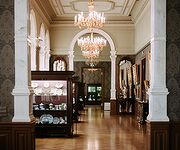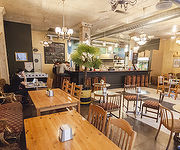Baltic capitals tell a tale of three cities
Riga - The most striking feature of Tallinn, Riga and Vilnius - the capitals of the Baltic states of Estonia, Latvia and Lithuania respectively - is their capacity to surprise.
The Baltics are known mainly for their Soviet past. To most tourists, this conveys an image of ugly buildings, squalid streets and sullen, unwashed people.
Moreover, few visitors differentiate between them. Thanks to the publicity post-EU enlargement, most at least know that the Baltics are not the Balkans, but many still assume that it's not worth remembering which country is which because they're all the same.
The two assumptions could not be more wrong. All three Baltic capitals are works of medieval art, and the three wings of the triptych are so dissimilar that it's worth asking whether the word "Baltic" has any meaning.
Tallinn, the northernmost of the three, might have inspired Tolkien's Minas Tirith. Its white-walled, 13th century fortress, built by Danish invaders, spills down a rocky crag in a sprawl of cobbled lanes and half-timbered houses.
Riga, the largest of the three capitals, is an oil painting to Tallinn's black-and-white sketch. The medieval heart is rich, red-brick Gothic, picked out with black and gold, and around it is one of the most exuberant displays of art-nouveau design in Europe.
Vilnius is a Baroque restoration. Centred on a medieval hilltop fortress, the city's chief pride is its collection of ponderous Counter-Reformation churches: some restored, some decaying, but all a testament to the power of 17th century Catholicism.
Beneath the surface, however, their essential similarity is clear. All three Baltic states have embraced capitalism with alacrity, and cities in which the average wage is below $500 (about R3 500) per month boast more BMWs and designer boutiques than many western capitals.
That said, mass car ownership is still relatively new: all three city centres are made for pedestrians. Few squares do not boast a delectation of cafes, and one of the chief pleasures the Baltics can offer is sitting and watching others enjoy the Baltics' pleasures.
One factor should be borne in mind, however: all three capitals spent most of their existence as parts of someone else's empire. As such, the cities are their own chief attraction.
All three are deservedly UNESCO World Heritage sites, but they lack the range of attractions that would make them world-class destinations.
Tallinn, for example, has just opened a magnificent national gallery, destined to showcase the history of Estonian art. Riga is blessed with a highly-regarded opera, while Vilnius boasts a series of fairs, shows and festivals throughout the summer.
However, their chief selling points remain their architecture, nightlife and relatively low prices. All three are keen to diversify, but their efforts have not yet gone far.
Currently, all three are also battling with a growing image as international stag-weekend venues. Fortunately, the city centres are still generally quiet and safe: some bars can be rowdy, but the worst excesses can be avoided with no more than a little care.
Riga's image has also suffered from the aggressive advertising tactics used by some strip clubs. However, the city council recently banned erotic advertising, so it is hoped that nipple-strewn leaflets will soon be a thing of the past.
Tallinn and Vilnius are just more than 600 km apart, with Riga equidistant between them: you can travel from one to the next in five hours. Any one would be an ideal destination for a long weekend; the three together would make an admirable nine-day trip.
All major European airlines fly to at least one of the three capitals, and public transport between them is cheap and efficient. The three countries have not yet entered the euro: local banks offer reliable money changing facilities, and cash-points are plentiful.
By Ben Nimmo
 Cafe Lechaim
Cafe Lechaim
 Art Museum Riga Bourse
Art Museum Riga Bourse
 Delisnack Riga
Delisnack Riga





